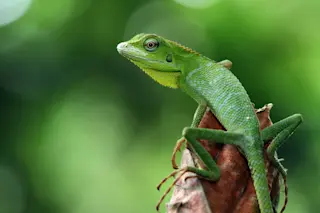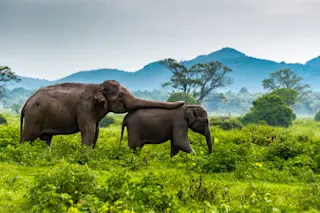When two people get knocked off their feet by physical chemistry, their friends may offer this standard glib explanation: "It's all about the pheromones." But in fact, 50 years after the term "pheromones" was coined by biologists to refer to the chemical messages passed within many insect and mammal species, researchers still haven't found proof that humans emit or detect such chemicals. In an essay in Nature [subscription required] marking the 50-year milestone, zoologist Tristram Wyatt sums up the state of the research, and reminds the gullible not to buy any love potions that boast of their pheromone content. The first studies took place in 1959, when German researchers discovered a chemical called bombykol that's secreted by female silk moths and that immediately sends males into a mating frenzy. Following that Nobel Prize-winning work, biologists
proceeded to find pheromones "across the animal kingdom, sending messages between courting lobsters, alarmed aphids, ...











